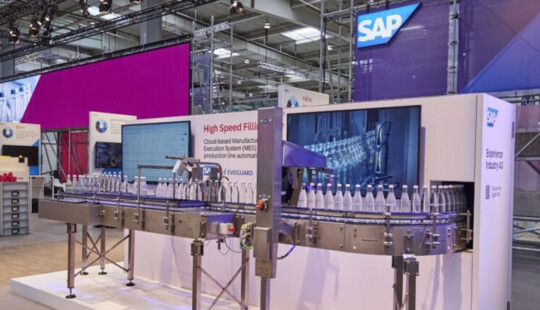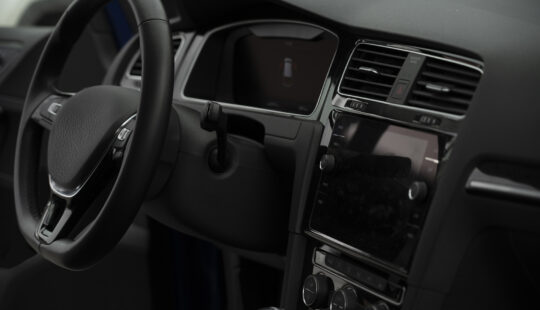Building risk-resilient supply chains is one of the top issues CEOs are discussing on earning calls and in board rooms around the globe. The issue has gone from one priority among many to business critical. And CEOs are no longer just pursuing lower costs, shorter lead times, and higher quality.
Instead, they are recognizing the need to resolve supply chain disruptions in an integrated way, bridging the silos of various functions and going beyond dealing with supply chain disruptions as they occur.
Taking a macro-view is also something governments have begun doing. Just think of the huge investments to “bring supply chains home”; for example, for semiconductors or for sustainable energy. At the same time, diversifying supply chains and complying with new regulations keeps increasing their complexity.
Companies take various approaches to these challenges, such as de-coupling their supply chains by building up costly inventories for critical components. Another option is reshoring or nearshoring, which brings manufacturing and supplier relationships closer to core markets, ideally in countries with similar political and economic systems. But all of these strategies come with downsides, including the cost of operations in globally competitive markets.
At SAP, our vision is to embrace interconnected supply chains and optimize material flows — sustainably — with digital technologies. We believe in intelligent strategies to reduce supply chain uncertainties for the long-term by helping industries redefine their operations and by creating value chains that are more intelligent, connected, and responsive.
Supply Chain Convergence Increases Agility
Companies that resolve supply chain disruptions in an integrated manner bridge the silos of various functions such as procurement, logistics, or manufacturing. That’s how they can truly alleviate the impact to their organizations. Supply chain functions need to work in concert and extend into their ecosystem of suppliers. Even the most accurate supply chain plan is meaningless if material suppliers cannot commit to volumes and lead times. Through integrating supply chain planning, such as demand and supply plans with procurement collaboration, manufacturers have a much stronger strategic lever to avoid downstream shortages.
At SAP, we call this approach design-to-operate. Our strategy is to deeply connect all relevant functions in a supply chain along end-to-end value chains and business processes. Going beyond the four walls of your own enterprise, into your ecosystem of suppliers and sub-suppliers — that’s the ultimate way to tackle supply chain challenges. In the case of supply shortages, for example, it is imperative to analyze the impact to the organization.
With ���۴�ýIntegrated Business Planning, . Impacted customer orders and revenue at risk are visible and informed actions can be taken to mitigate any shortages, for example, by changing production schedules. The ���۴�ýDigital Manufacturing system knows immediately about the changed production plan for the next shifts and adjusts labor and resources accordingly. Logistics departments in ���۴�ýExtended Warehouse Management orchestrate the new material flow, , and asset maintenance activities are re-scheduled to adhere to the new production priorities.
As a result, supply chain leaders who follow a design-to-operate paradigm are highly agile and can take critical actions quickly to deal with supply chain disruptions.
SAP’s Industry Business Networks: A New Paradigm &�Բ�����;
Entire industries are recognizing the benefits of going beyond the four walls of their own enterprise. Consider a car company investigating faulty engines coming from one of their production lines. Now imagine it can trace the failure not only to a particular batch of components from one supplier but then dig even deeper to identify faulty basic parts from the supplier’s supplier. Instead of having to recall thousands of vehicles, it needs to recall only a few.
Solving problems this way requires a mindset for radical collaboration as well as technology for efficient, cross-company data exchange. is an open network that enables just that. It guarantees interoperability by defining common standards. The network is not owned by a single business and data providers keep their data sovereignty. For instance, they define for how long and for which purpose their data can be used. On the other hand, consumers can trust that data comes from a reliable source.
���۴�ýis one of the founding members of Catena-X, together with five other companies. Since 2020, the initiative has grown to IT companies. Among them are Germany’s biggest car companies as well as many small and medium enterprises. Catena-X may soon become the industry’s standard.
Naturally, the is ready for Catena-X. It readily connects Catena-X to SAP’s broad portfolio of automotive IT solutions to trace parts, measure carbon emissions and manage demand, capacity and quality. Recently, ���۴�ýannounced business networks for more industries, including , with more to come.
Generative AI Adds New Types of Intelligence
A key tool in solving supply chain complexity challenges is artificial intelligence (AI). Even before the recent groundbreaking advances in large language models (LLMs) and generative AI, our supply chain solutions have been infused with both “traditional” and “advanced” AI.
For instance, creates demand forecasts based on historical demand patterns, but it also leverages advanced machine learning capabilities to improve forecast demand with point-of-sales data and improve planning quality using self-healing master data and lead time predictions. In the future, generative AI will enable completely new types of intelligent capabilities like these:
- Facilitating human-machine interaction: Users will soon be able to interact with their system much more naturally via our new embedded generative assistant Joule. For example, they will be able to ask which of customer X’s demands for product Y are still unfilled in Central America. Joule will give the answer, intelligently combining data from various systems and domains because it will be embedded throughout the ���۴�ýcloud enterprise portfolio.
- Supporting creativity: Much like a sparring partner, generative AI can help designers, engineers, and product managers create new product ideas in an innovation cycle and iterate them with ���۴�ýEnterprise Product Development.
- Transforming unstructured data: Consider a truck arriving at a warehouse with inbound cargo. The clerk knows what cargo to expect and this is saved in an ���۴�ýsystem. However, what is really on the truck is written on a loading list, often in paper form. Making this data available digitally has been possible for quite a while and is known as optical character recognition (OCR). What’s new is that generative AI tools can now match the unstructured loading list to the structured data already in the system — in a split second.
Leveraging AI for companies to scale and sustain business operations will no longer be optional. Consider the increasing labor shortage facing manufacturing companies, among others. They will have a shortfall of up to 85 million employees by 2030 — roughly the population of Germany!
By automating mundane tasks with advanced AI capabilities, we will bridge the human resources gap and enable experts to focus on what really matters: making data-backed business decisions.
Human and artificial intelligence work hand in hand — it’s a duet, not a duel.
We already help our customers build risk-resilient supply chains and deeply connect enterprises to run productive, agile and automated operations. Now, by also leveraging the power of generative AI, we will ensure that supply chain resilience doesn’t have to be something that keeps CEOs up at night.
Thomas Saueressig is a member of the Executive Board of ���۴�ýSE, ���۴�ýProduct Engineering.



